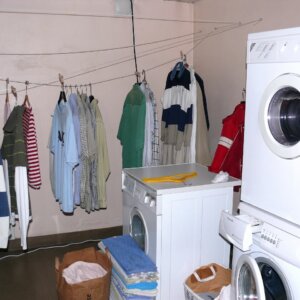 Going solar? Good call. It’s the right choice for your pocketbook and for the climate. If everyone in Nevada used solar power, it would take 32 billion pounds of carbon out of the atmosphere every year—according to the EPA’s greenhouse gas calculator, that’s the equivalent of planting a forest that would cover 17% of the state.
Going solar? Good call. It’s the right choice for your pocketbook and for the climate. If everyone in Nevada used solar power, it would take 32 billion pounds of carbon out of the atmosphere every year—according to the EPA’s greenhouse gas calculator, that’s the equivalent of planting a forest that would cover 17% of the state.
Solar power is a growing part of the energy mix in Nevada. Nationally, the state ranks #6 in solar energy use.
Solar Energy Pros And Cons
The biggest advantage of solar energy? The cost—$0. For the average Nevada household, generating all their own electricity with solar would save $1,388/year. Also, you’re doing a favor for the next generation. Instead of relying on natural gas plants, supplied by fracking and offshore drilling, which produce most of Nevada’s electricity, you’ll be producing your own clean, renewable energy. In Nevada, residential customers like you account for 23.2% of the state’s total energy consumption.
The disadvantages: The cost of installation. The average solar installation costs around $20,000. Incentives like the U.S. Residential Renewable Energy Tax Credit can bring the overall cost down, over time. Unlike most states, Nevada offers no tax credits or even property tax exemptions for homeowners who install solar.
How Many Solar Panels Do I Need For My Home?
The average Nevada family uses 29,800 watts of energy on an average day. And, on average, they’ll get 4.5 hours of sweet Nevada sun each day. So, to get enough energy to keep the power running all night, they’ll need their solar power array to generate 6,622 watts of energy per hour while the sun’s out.
Assuming they go with 250-watt solar panels, the math is simple. 6,622 watts/hour divided by 250 watts/panel = 27 panels needed.
To figure out exactly what you’d need based on where you live in Nevada—and how much money you’d save—use this solar savings calculator:
Solar Trends In Nevada
Nevada is a major center of the solar industry and has high solar production, and has high solar potential that has yet to be developed. However, Nevada is one of the centers of a policy fight between utilities who want to end rooftop solar generation, and the solar industry itself.
Nevada Solar Policy
Nevada has an ambitious renewable energy portfolio standard: it calls for 25% of Nevada’s industry to be generated by renewables by 2025.
Nevada, like most states, offers net metering. Net metering deducts energy that private solar operators have generated from the total cost of their utility bill and credits those small operators for any excess power generation that goes to the grid at large.
However, utilities and utility-scale solar companies have clashed with rooftop solar companies and users over the state’s net metering rules. According to utilities, retail pricing in net metering is too expensive to sustain. Solar advocates, citing studies by the Brookings Institution and the National Resources Defense Council, counter that retail price net metering is essential to maximizing the solar industry. The utilities were successful in decreasing the net metering rate below retail pricing, and all systems—including previously installed rooftop systems—are now less lucrative for their operators. Rooftop groups are organizing to revert to retail price net metering.
Nevada Solar Projects
In March of 2017, the first solar project on tribal land was created by the Moapa Band of Paiutes, who partnered with the company First Solar.
On January 25th, Apple announced they would be increasing solar energy in Nevada for their Reno data center, the additional 200 MW of solar energy should be complete by early 2019.
As of June 2017, organic hay provider Empire Farms will partner with Sunworks in a 760 KW solar project, the project would save more than $2.5 million in the next 25 years.
Nevada Solar Advocates
The Solar Energy Industry Association (SEIA), Bring Back Solar Nevada and Vote Solar are all organizing to revert net metering to the old rules.
Free Solar Consultation
Ready to start? Sign up for a free consultation with a solar installer near you.








































